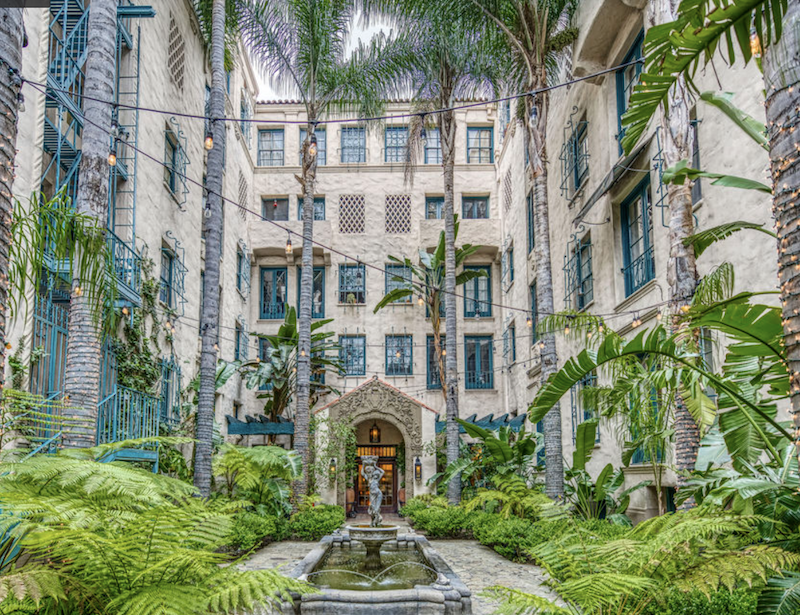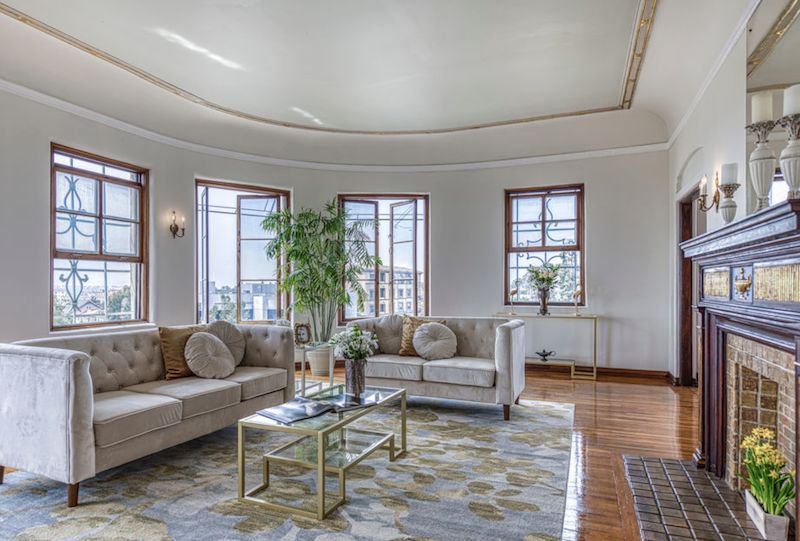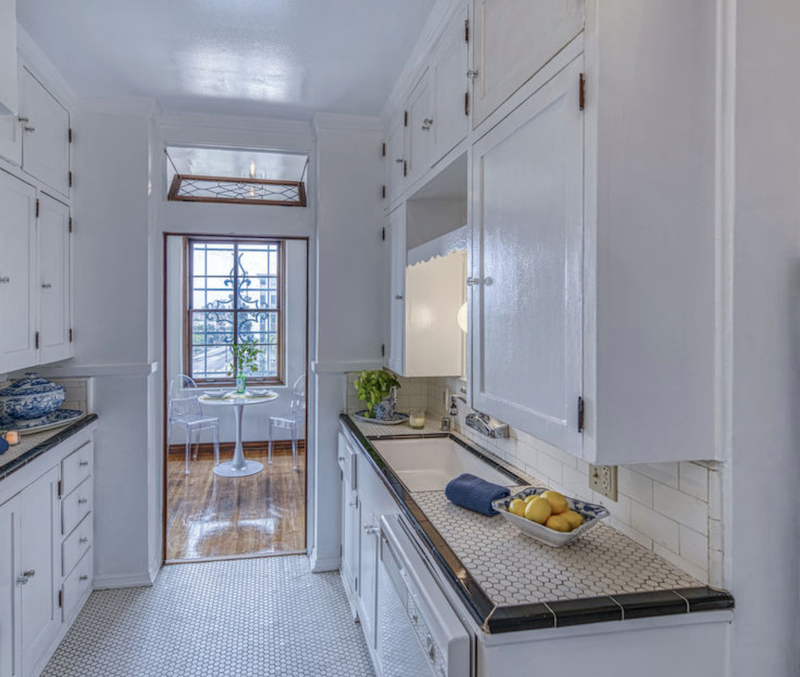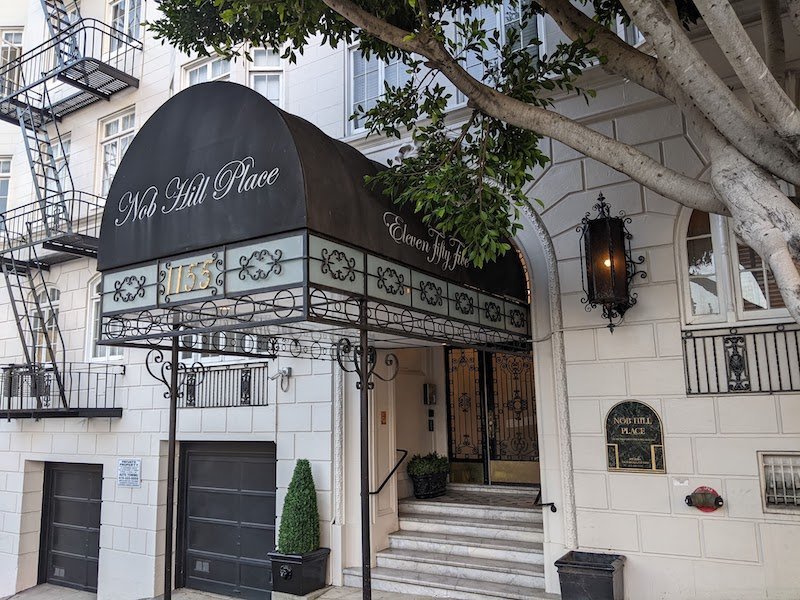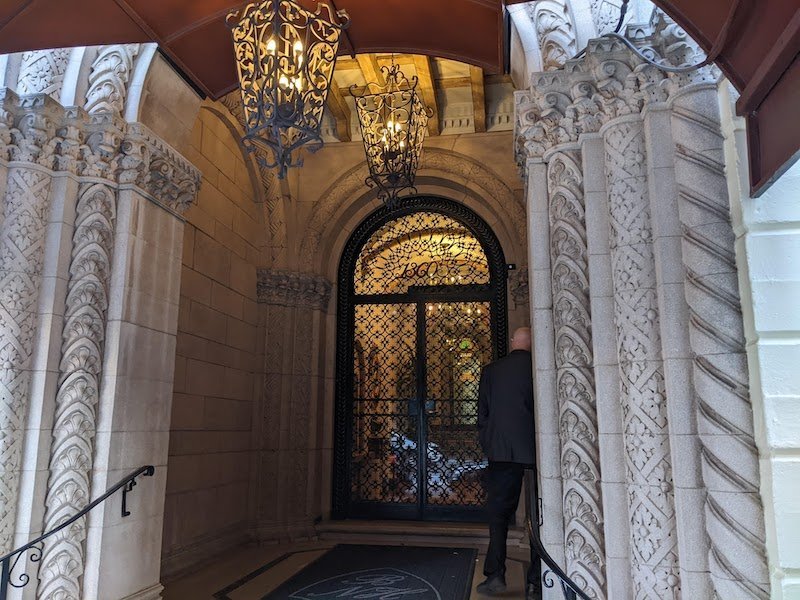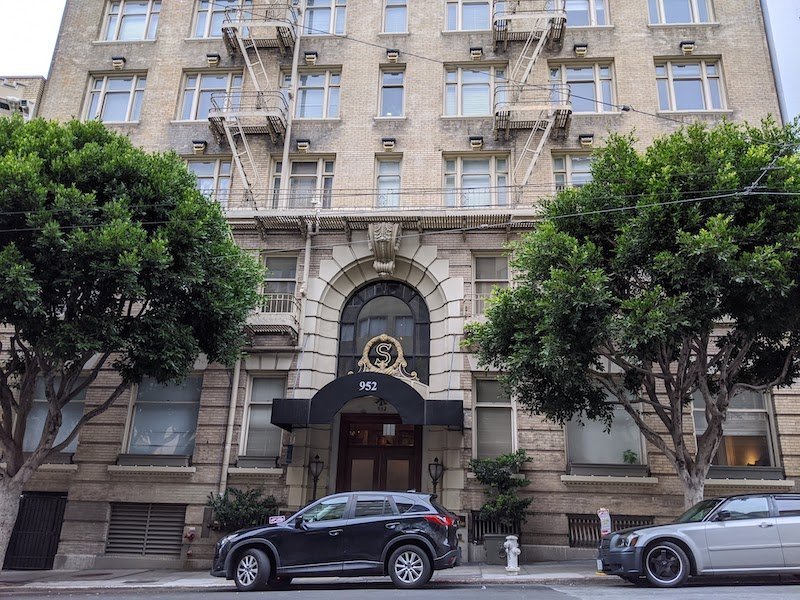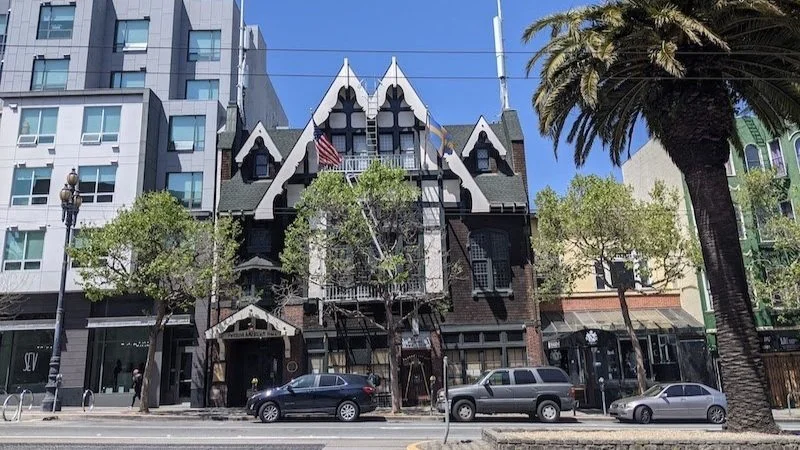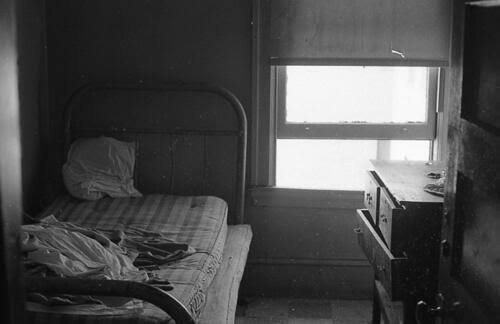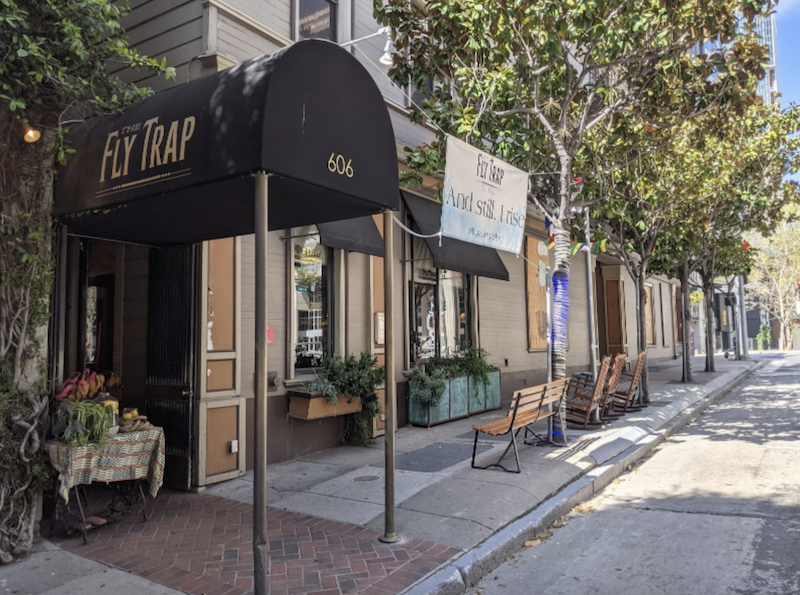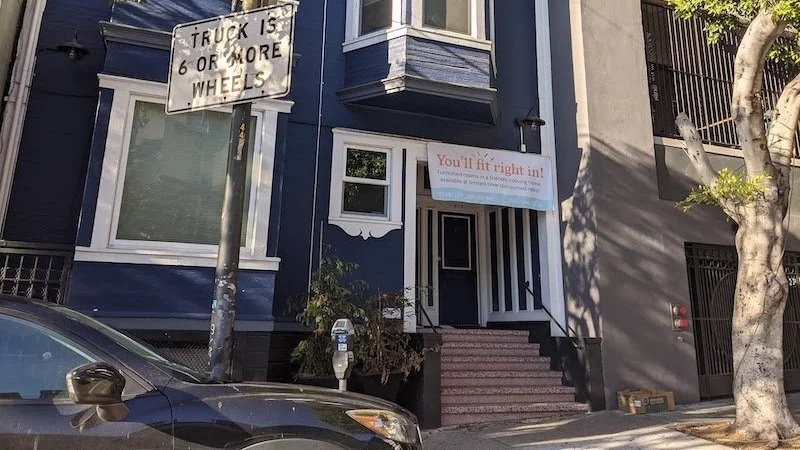Monopoly Hotels and Missing Middle Housing
This article was originally published on Strong Towns member Johnny Sanphillippo’s blog, Granola Shotgun. It is shared here with permission. All images for this piece were provided by the author, unless otherwise indicated.
(Source: Flickr.)
I recently enjoyed a podcast where the two hosts engaged in a bit of banter about real estate. One had gradually purchased a few homes in a row along the same street and compared them to the little houses in the game of Monopoly. The other asked if he was going to put up hotels next. That got them on the topic of “missing middle” housing and how there were no apartment buildings in Monopoly. Their conversation reminded me of how both society and terminology have changed over the last century since that particular board game was first introduced in the 1920s.
Back in the 1980s I was in my teens and living in the Los Altos on Wilshire Boulevard in Los Angeles. It was a five-bedroom, six-bath apartment with a motley collection of roommates, including a couple of aging drag queens and a few rent boys. In its heyday, our unit was the love nest of silent movie actress Marion Davies, who had been the mistress of newspaper magnate William Randolph Hearst. Other Hollywood notables such as Clara Bow, Mae West, Bette Davis, and Judy Garland also once occupied the building.
By the time I lived there, both the building and neighborhood had declined significantly, which is why it was affordable and populated by questionable characters like myself. I made a quick return visit once in middle age, chatted with the building manager, and was pleased to see the building had been thoughtfully renovated. I was also more than a little scandalized that studio apartments in the building were now renting for $3,100 a month. The pendulum of fashion and finance swings back and forth. Wait long enough and everything comes full circle.
So, here’s the thing… The Los Altos was built as a residential hotel. People would live full time in such buildings and enjoy maid service and other amenities as if it were a short-term luxury resort. This arrangement was common in every decent-sized city in America at one time. The distinction between a hotel and an apartment building was blurry. Those hotels from the Monopoly game were understood at the time to be rental apartments.
Here in San Francisco there are (or were) hundreds of such residential hotels, including The Steinhart on Sutter Street. They catered to an upscale clientele and were located in the best neighborhoods. A few comparable buildings currently promote themselves as “corporate” housing, with the implication that they offer medium-term accommodations for well-heeled professionals with generous expense accounts. But most of these buildings converted to condominiums or full-time rental apartments over the years as the hotel aspect was phased out.
Slightly further down the class ladder were accommodations for professional workers often specializing in particular occupations. The theater district near Union Square, as well as Civic Center around the symphony hall, were peppered with residential hotels for performers, musicians, and stagehands. Some people occupied them temporarily while on tour, but many others lived there for years.
I once had a friend who lived in the Martha Washington Residence for Women near Market Street that originally prohibited men from the premises. There were still little brass placards in the lobby and corridors reminding the inhabitants of the virtuous nature of the establishment. Back in the day, a matron was stationed in the building to monitor the comings and goings. Evidently there were many such female-only properties at one time, likely modeled after the success of the Martha Washington Hotel in New York, circa 1907.
The woman who once lived in my apartment had previously lived full time at the Pickwick Hotel during World War II. Like many women of her generation, she worked in wartime industries while the men were overseas. Residential hotels were the backbone of the housing sector in many critical locations when lodging was scarce. The Pickwick fell on hard times after the war, but endured long enough to be restored as a tourist hotel.
This grand Edwardian near Duboce Park began as a residential hotel. Like many of its kind, it experienced decline in the mid-twentieth century as cities like San Francisco lost value. Then, just like the Los Altos in LA and the Pickwick, it survived to rise again as new money poured into the area. It’s now a highly desirable apartment building where people pay $3,000 per month for one-bedroom units.
Lower down the class and income ladder were (and are) hotel options for the working class. It’s important to remember that until fairly recently, San Francisco was a blue-collar town dominated by industry and the seaport. Single men and women would typically have small individual rooms with a shared bath down the hall. Some would include a sink in the bedroom and occupants were known to have hot plates for making coffee or soup. People took the majority of their meals at a nearby lunch counter or diner. Likewise, laundry would be managed in neighborhood establishments down the street.
It was quite common for young people, the elderly, and the poor to spend many years in such places—some happily, others less so depending on temperament and the particulars of the property. As these buildings aged and fashions changed, the better-quality places sometimes worked their way down to the budget level and became seedy. And sometimes trashy places were renovated and upgraded to middle-class standards depending on management and what the market would support.
These buildings were also the first stop for waves of immigrants who would gather together until their futures improved in a new land. The Swedish American Hall was built in 1907 and served as a settlement house for newly arrived Scandinavians, as well as Nordic sailors on shore leave. While there, connections were often made with the established community so newcomers could find work and assimilate.
This was typical of many such lodgings of the era, each serving its own subgroup. Irishmen, Jews, Chinese, and so on had their own version. Like many older buildings, the Swedish American Hall has been converted to alternative uses in recent years. It’s now an event venue for hire and no longer offers residential accommodations.
One of the prime benefits of living in a hotel is the ease of getting a room quickly without the upfront costs of first and last month’s rent, security deposits, utility connections, and buying furniture. There’s also less friction when it came to the kind of references required for an apartment. A hotel room could also be used, left for a period of time, and returned to as needed as circumstances changed. This is especially relevant for people who had not yet found their footing in terms of full employment. These residential hotels were ideal transitional housing in many ways.
These old black and white photos of the Planters Hotel at 2nd Street and Folsom were taken in 1970. They were part of an organized campaign by a group called TOOR (Tenants and Owners in Opposition to Redevelopment) to prevent the building from being demolished. The South of Market neighborhood was once part of the industrial waterfront of the city and housed thousands of dock and factory workers. They weren’t necessarily paid well, so housing had to be cheap, if a bit rough. This building was 63 years old at the time and had gone down the value chain until it hit bottom.
As the nature of the economy shifted, there were people left behind and neither they nor the buildings they inhabited were appreciated by the authorities. These budget buildings were documented in Paul Groth’s book Living Downtown: The History of Residential Hotels in the United States. He describes the cultural and political forces that eventually dismantled them. Flop houses full of ragged men with easy access to cheap bars were considered unwholesome. The city was keen to transform whole parts of the city with slum clearance and redevelopment.
At the same time, luxury residential hotels occupied by single women were criticized for different reasons. Proper women should be married and live with their husbands and children, not frolicking in an unladylike manner on their own. A grand vision of middle-class respectability was squeezing out the periphery in favor of a very specific prescribed recipe for housing at the expense of all other options.
These photos in front of the Planters Hotel were taken by longtime resident of the neighborhood Janet Delaney in 1980. She spent decades photographing the area and documenting its people. The desire for wholesale removal of these residential hotels by city planners and investors alike is wrapped up in a desire for civic improvement and economic gain. But it’s also a decades-long story of well-intentioned reformers looking to uplift the living conditions of the working class and poor. The idea was to destroy the substandard accommodations and replace them with healthier, modern structures. The demolition was easy. Constructing the affordable replacements was not.
Today the Planters Hotel still exists in physical form and has been renovated to a good standard. But it’s now an office building with retail on the ground floor. Fifty-odd years after community groups organized in favor of preserving affordable housing, San Francisco is infinitely farther behind. Many of the people now living in tents on the street or in vans might once have lived in the residential hotels that were eliminated.
Ask any middle-class resident if they want “affordable housing” anywhere near them. Ask the people who build new structures if they’d like to construct low-rent properties or luxury units. Ask the economic development people at City Hall if they want to attract high-income residents or minimum-wage workers.
Affordable housing can’t be built in sufficient quantities, given the current political and economic reality. Truly market-rate, genuinely affordable housing is actually just old run-down housing that used to be expensive a long time ago. If you want to know where all the cheap flats and affordable rooms for rent are being built…look no further than the shiny new stuff and wait several decades.
As housing for the professional class becomes ever more expensive in certain cities with fewer and fewer vacancies, investors are reviving some of the old models. StarCity launched in 2016 as a co-living provider, offering dormitory-style accommodations with private bedrooms and shared living areas. Its business model proved successful right up until the coronavirus emerged in 2019 and things got wobbly. It’s not clear whether co-living was inherently more dangerous than the same individuals returning to their family homes elsewhere and crowding into mom’s spare room, but the perception drove the market.
StarCity was acquired by Common, which managed to weather the pandemic largely because it had fewer fixed operating costs. Instead of primarily owning its own buildings, it partners with existing property owners in select locations. Common rents entire properties at wholesale prices, retrofits these spaces to suit its brand and template, then sublets rooms as part of the co-living trend at a retail price point. It’s the same basic business arrangement as WeWork—meaning arbitrage between renting in bulk and then subletting to profit off the spread. Co-living spaces come fully furnished and inclusive of all utilities, housekeeping, in-house laundry, Wi-Fi, etc.
Co-living properties are now being developed by a number of private companies in tight, overheated markets as affordable and hassle-free housing options. Depending on the cost, location, and demographic served, these properties are very similar to the old SRO (single-room occupancy) model like the Planters Hotel. This style of property isn’t for everyone, but it can serve a critical need in particular markets. Notice how most of these ventures exist in older building stock that was repurposed.
At the higher end are new buildings like 2100 Market Street. The triangular site was once occupied by a small, one-story fast food outlet and a parking lot. I watched as this modern, seven-story, mid-rise building went up in its place. The developer, Brian Spiers, complied with all city rules and regulations by building 52 small, stylish, market-rate apartments, as well as eight below-market-rate units offered to qualified full-time tenants. Then the property was leased to Sonder, a management company that specializes in medium-term corporate housing. Sonder now sub-leases the 52 units as fully furnished hotel-like rentals to a corporate clientele. This is a complete return to the old upscale residential hotel model.
Spiers and Sonder have found a way to build and operate desperately needed new housing in a ferociously regulated and difficult jurisdiction, while generating a profit. The eight subsidized below-market-rate units are a token improvement for the lucky folks who live there. Remember, no one lived at the fast food joint that was demolished to make room for this building.
But this model doesn’t scale to provide meaningful quantities of housing for the majority of low-to-moderate income renters who are still priced out. And it isn’t meant for full-time, long-term occupants. The cost of land, materials, labor, and regulatory friction don’t allow for that. They really, truly don’t. The numbers aren’t even close. What this property is doing instead is feeding into the long, slow process of shiny, expensive, new places that gradually work their way down to sad, old, cheap places as the economy shifts, fashions change, and physical structures deteriorate. That’s how things work in the real world, like it or not.
As an aside, the game now known as Monopoly was invented by Elizabeth Magie and was first called The Landlord’s Game, which she patented in 1904. It was meant to be an instructional device to demonstrate the way rent and taxation influenced society as described by Henry George, who advocated for land tax reform.



